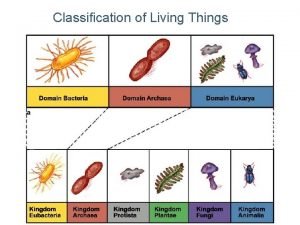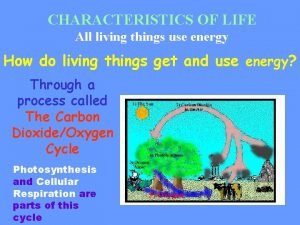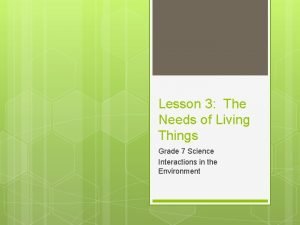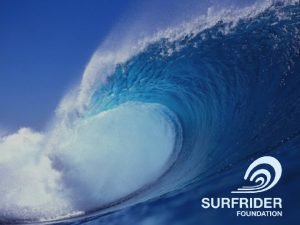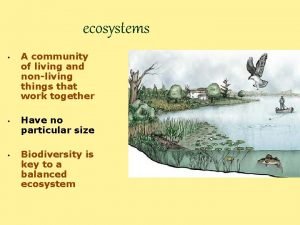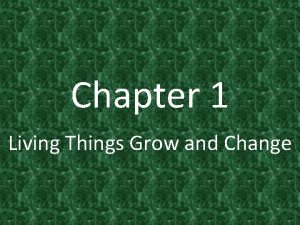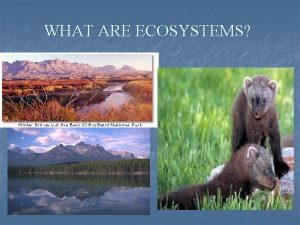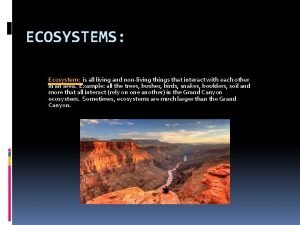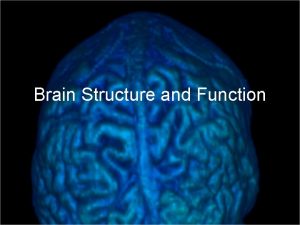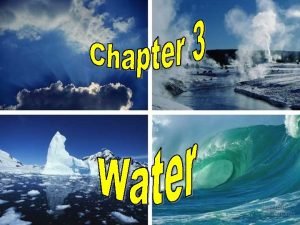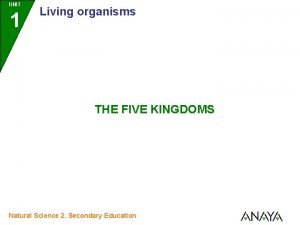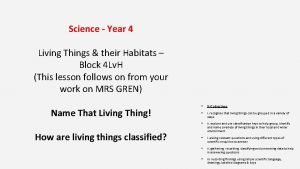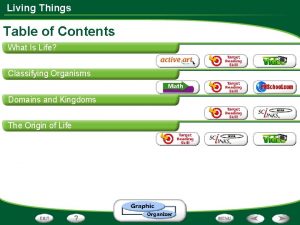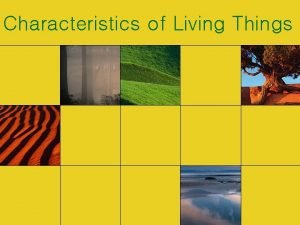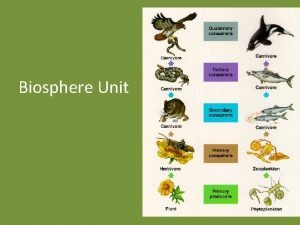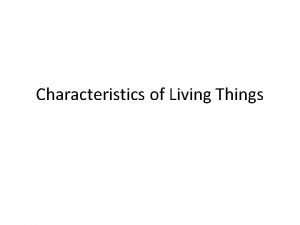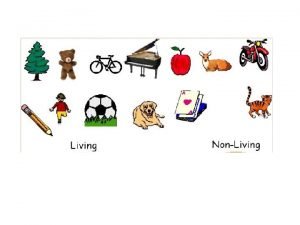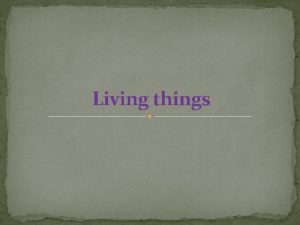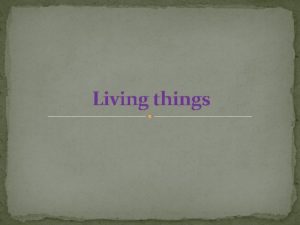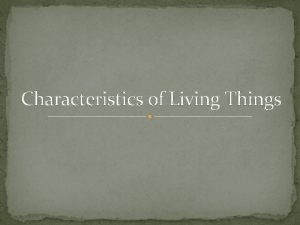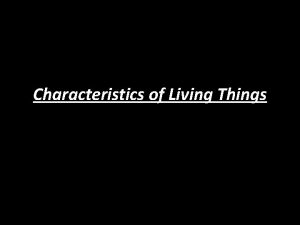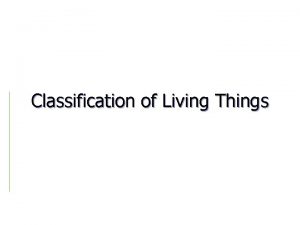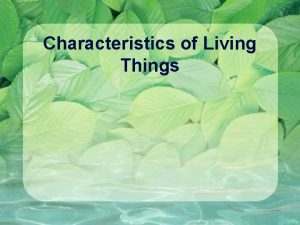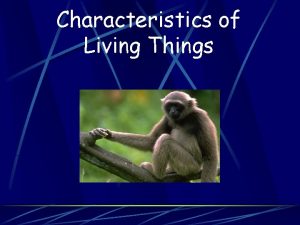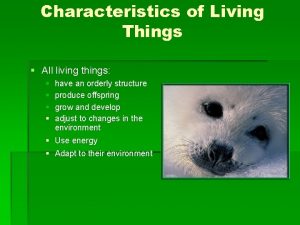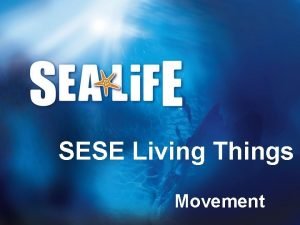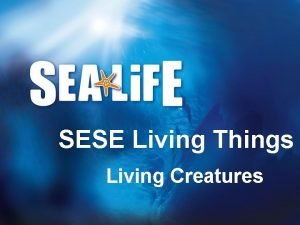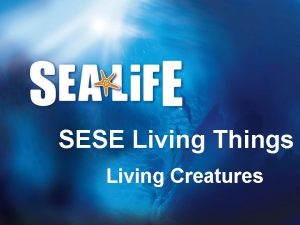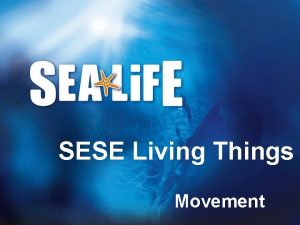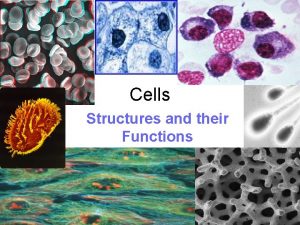Cell structures and functions All living things share


































- Slides: 34

Cell structures and functions

All living things share common compounds: water: universal solvent – smaller is better transport hydrolysis carbohydrates: source of energy cell recognition (monosaccharides, disaccharides, polysaccharides) lipids: source of energy does not dissolve in water (saturated, unsaturated, polyunsaturated) proteins: cellular growth and repair enzymes aid in diffusion and transport (amino acids) nucleic acids: genetic codes and transmission DNA: reproduction and function double strand RNA: protein synthesis

All livings need: water shelter energy- life processes Photosynthesis: energy from sun stored in chemical bonds of sugars Respiration: chemical reaction aided by enzymes to break bonds to release energy. aerobic-oxygen=a lot of energy released anaerobic-lack of oxygen=not so much energy released Chemosynthesis: unicellular organisms obtain energy from inorganic compounds=minerals=little energy obtained autotrophs heterotrophs

All living things will: grow(increase in the number of cells) and develop (organs become more complex, mature) respond to environment: stimulus and appropriate response reproduce: to continue the species sexual: 2 cells-2 sets of DNA-similar offspring asexual: 1 cell-1 set of DNA-identical offspring stable internal environment: homeostasis temperature (rise in could denature enzymes) blood pressure respiration rate metabolism rate heart rate

THE CELL!!! THE CELL THEORY 1. ALL LIVING THINGS ARE COMPOSED OF CELLS. 2. BASIC UNIT OF STRUCTURE AND FUNCTION 3. PRODUCED FROM OTHER CELLS.



CELL MEMBRANE thin, flexible barrier cholesterol-lipid selectively permeable CELL WALL rigid, protective barrier cellulose –carbohydrate polysaccharide

Nucleus: brain of the cell contains genetic material – codes for function controls cell’s activities prokaryotes: cell membrane and cytoplasm NO NUCLEUS bacteria, staph, ecoli Eukaryotes: cell membrane, cytoplasm, and nucleus

NUCLEAR ENVELOPE Double membrane *pores CHROMATIN DNA+protein NUCLEOLUS Production of proteins

Cytoplasm: jelly like substance that fills the cell 70% water Cytoskeleton: network of protein filaments maintains shape Microtubules: cell movement = cilia, flagella cell division=centrioles Microfilaments: structure

Ribosomes: synthesis of proteins using codes from RNA Endoplasmic Reticulum: movement of materials rough: synthesis of proteins contain ribosomes smooth: contain enzymes-specialized tasks= synthesis of lipids

Golgi bodies: package and transport materials in the cell, especially proteins: produced in RER Lysosomes: cell’s waste disposal system enzymes break down lipids, carbs and proteins digest old organelles

Vacuoles: storage for water, salts, proteins, carbs plants – one large =storage and support **vesicles: small vacuoles used to transport Chloroplasts: chlorophyll (Plastids: leukoplasts/chromoplasts) trap sunlight for photosynthesis contain nucleus=reproduction

Mitochondria: powerhouse of the cell convert energy from food into ATP involved in cell death, cell division cellular respiration. contain nucleus=reproduction inherited from mother two membranes



Cell membrane – selectively permeable protects, supports takes in food and water eliminates wastes structure of membrane: double layer made up of lipids called lipid bilayer=tough, flexible


Diffusion: movement of materials through the membrane based on concentration: high concentration to low concentration **when concentration inside is equal to concentration outside the system has reached equilibrium

Molecules will continue to move into and out of the cell to maintain equilibrium.


Osmotic pressure: force exerted by too much fluid inside a cell-a result of movement of fluid from high concentration to low concentration. This pressure could cause cells to burst. Freshwater would be a problem for most cells in a living organism because of the salt content in the fluids that surround cells. In large living organisms, cells do not come in contact with fresh water because these cells are surrounded by fluids such as blood which is isotonic.

Cells that would come in contact with fresh water such as plants and bacteria correct this osmotic pressure in two ways: 1. cell wall prevents cells from expanding 2. contractile vacuoles-vacuoles that have the ability to contract or pump rhythmically to push water out of the cell.

Summary of diffusion

Some molecules such as water, alcohol, and small lipids can diffuse or move through the lipid bilayer into the cell. Others cannot-size, polarity. Facilitated diffusion is a process that uses special proteins to allow these molecules to pass into the cell http: //highered. mcgrawhill. com/sites/9834092339/student_view 0/chapter 38/how_facilitated_diffusion_works. html

SODIUM CALCIUM POTASSIUM Transport protein Na These elements are important for muscle contraction such as the …….

Active transport-diffusion that requires energy low concentration to high concentration Seen mostly with ions such as potassium and sodium. Concentrations of these ions are lower outside the cell than inside the cell. Special proteins imbedded in the cell membrane act like pumps to pump these ions into the cell.

Two other ways cells bring materials in are: endocytosis: cell membrane engulfs material, forming a vacuole within in the cytoplasm. Size is not a factor and material can be a liquid or a solid Phagocytosis: engulfs molecules larger than endocytosis materials are solids only

Removal of large amount of material are known as exocytosis- membrane of vacuole fuses with cell membrane and contents are released

Unicellular: prokaryotes and eukaryotes may contain chloroplasts very adaptable reproduce easily and quickly offspring are identical live independently Multicellular: eukaryotes interdependent specialized cells

Levels of organization: cell tissue organ system

Osmosis: diffusion of water across a selectively permeable membrane. Isotonic: equal in out Hypotonic: more in than out swollen cell Hypertonic: more out than in shrunken cell

 Smallest living unit
Smallest living unit Sensitivity in life processes
Sensitivity in life processes Venn diagram of living and non living things
Venn diagram of living and non living things Cell structure graphic organizer
Cell structure graphic organizer Cell organelle graphic organizer
Cell organelle graphic organizer Why do we classify things
Why do we classify things Cells are the building blocks of all living things
Cells are the building blocks of all living things Life cycle of all living things
Life cycle of all living things What are the 5 basic needs of all living things
What are the 5 basic needs of all living things Are all living things based on the metric system
Are all living things based on the metric system All living things 1955
All living things 1955 Homologous structure
Homologous structure Name three line segments
Name three line segments Ecosystem living and nonliving things
Ecosystem living and nonliving things Ecosystem things
Ecosystem things Things that have roots
Things that have roots What are unicellular and multicellular organisms
What are unicellular and multicellular organisms Living things grow and change
Living things grow and change Live n living
Live n living Tropical rainforest living and nonliving things
Tropical rainforest living and nonliving things Is a candle living or nonliving
Is a candle living or nonliving Living non living dead
Living non living dead The two outer jovian planets appear bluish
The two outer jovian planets appear bluish What common belief did all progressives share?
What common belief did all progressives share? All plant fibers share the common polymer that is
All plant fibers share the common polymer that is Limbic system structures and functions
Limbic system structures and functions Function of amygdala in limbic system
Function of amygdala in limbic system Why is water important to living things
Why is water important to living things Examples of animal organs
Examples of animal organs Living things grow
Living things grow Living things meaning
Living things meaning Organic compounds made by living things
Organic compounds made by living things Living things table
Living things table Linnaeus
Linnaeus 6 kingdoms
6 kingdoms





